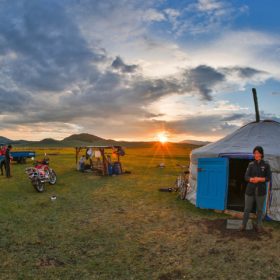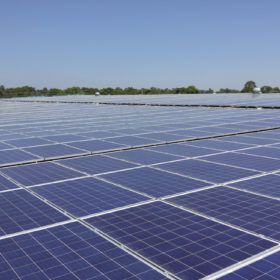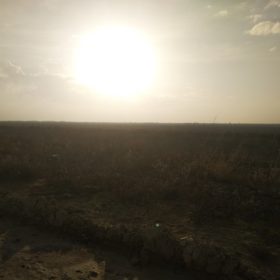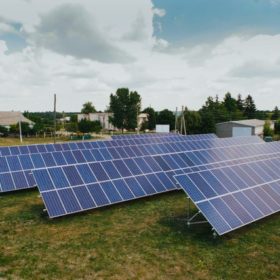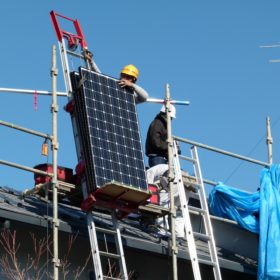Mongolia tenders 10 MW solar plant
The project, planned for Khovd in the west of the country, is being developed with the support of the World Bank.
Google buys power from another 1.6 GW of renewables
The new deals worth $2 billion in new investments were made by the Internet giant in in the U.S., Chile and Europe.
Solar-plus-storage for social housing
U.K. nonprofit organization Together Housing is launching a solar-plus-storage demonstration project in a social housing complex. The $2.4 million pilot is designed to identify alternative commercial models for residential storage, following the abrupt reduction of feed-in tariff rates.
Solar, renewables and hydrogen for greener marine transport
A new report in Sweden suggests that renewables are an ideal source of power for marine vessels, based on a case study in which solar PV and proton-exchange membrane fuel cells, combined with a diesel generator, were used to reduce the greenhouse gas and particulate emissions of cruise ships by almost 10%.
Fitch predicts a decade of corporate renewable power procurement growth in the US
Growth in U.S. solar and wind generation capacity will average 7.9% and 3.9%, respectively, between 2022 and 2028 according to Fitch Solutions, who projects almost 120 GW of solar power to be deployed in that period. Corporate clean energy buyers are to be a large part of the trend, and to accelerate deployments during the period.
Uzbekistan builds 40 MW solar park to power free economic zone
The self-consumption project, being built by EPC contractor Helios Energy, is being realized by the Ministry of Innovative Development. The energy generated will power a free economic zone in the Chust district of the Namangan region.
Moldova proposes renewables tariffs
The energy regulator has proposed a 15-year payment of $0.10/kWh for PV projects with a generation capacity of 10 kW-1 MW. The first auctions for large renewables projects are planned for early next year and will grant a fixed rate rather than a variable premium.
Mexico may resume cancelled energy auction
Energy minister Norma Rocío Nahle García yesterday announced the tender round believed to have been cancelled in January had merely been held up by the inability of power lines to cope with new generation capacity. The minister added, expanded nuclear capacity is under consideration.
The blackest black for more efficient solar cells
MIT scientists claim to have created a material 10 times more black than anything witnessed to date. It is said to be able to absorb more than 99.96% of incoming light and reflect 10 times less light than other superblack materials. The invention may be interesting for the development of black silicon PV technology and carbon nanotube-based solar cells.
Austria mulls mandatory PV as new rebates for solar and storage launched
With the region of Styria considering making PV mandatory on all new buildings, the nation’s Climate Fund will support PV and storage projects in agriculture and forestry. Applications can be submitted by November 2020 – or until the pot is empty.
